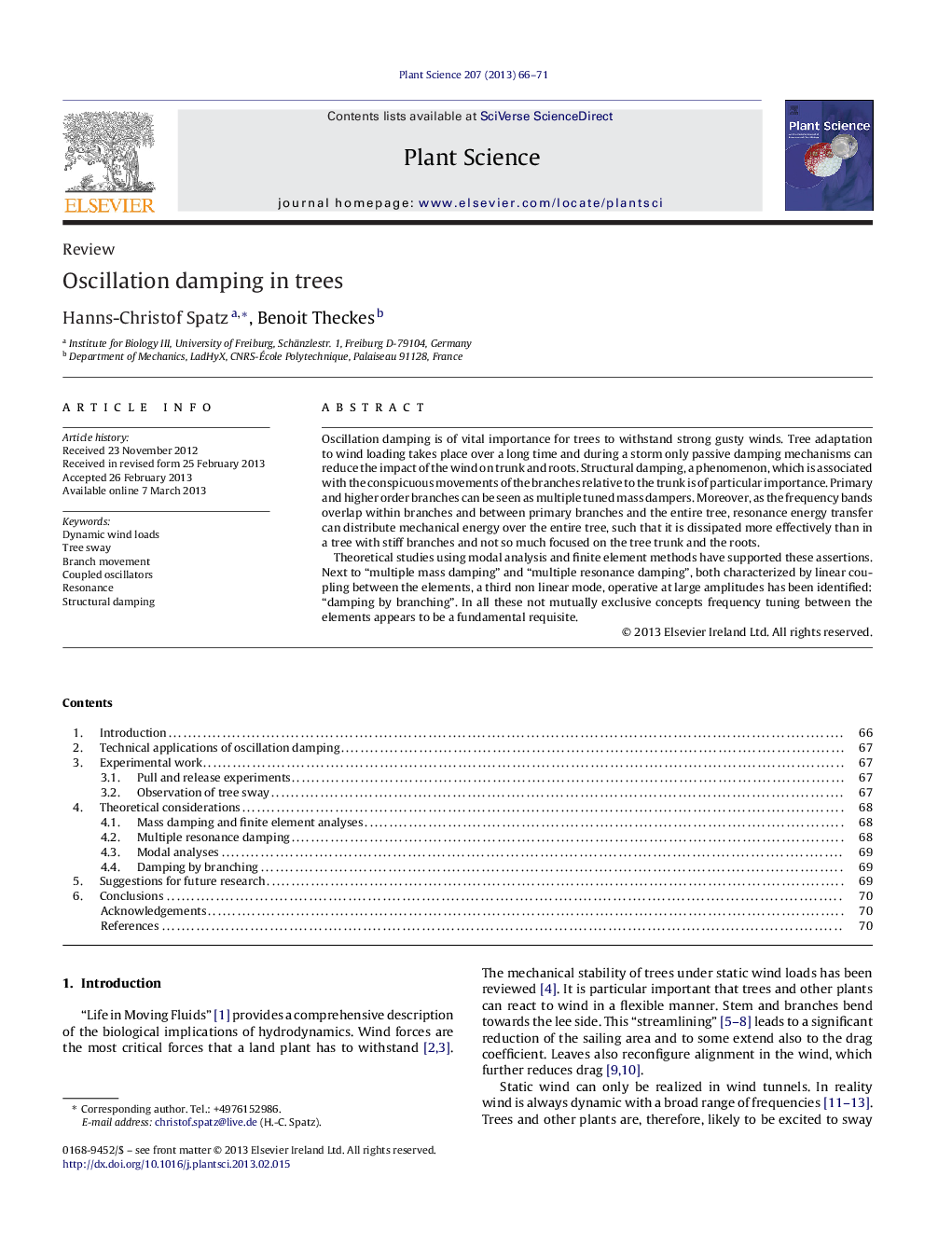| Article ID | Journal | Published Year | Pages | File Type |
|---|---|---|---|---|
| 2017131 | Plant Science | 2013 | 6 Pages |
•Structural damping is of vital importance for trees to withstand strong gusty winds.•Primary and higher order branches can be seen as multiple tuned mass dampers.•Resonance energy transfer can distribute mechanical energy over the entire tree.•Damping by branching has been identified as a non-linear mode of damping.•Theoretical studies using finite element methods have confirmed these concepts.
Oscillation damping is of vital importance for trees to withstand strong gusty winds. Tree adaptation to wind loading takes place over a long time and during a storm only passive damping mechanisms can reduce the impact of the wind on trunk and roots. Structural damping, a phenomenon, which is associated with the conspicuous movements of the branches relative to the trunk is of particular importance. Primary and higher order branches can be seen as multiple tuned mass dampers. Moreover, as the frequency bands overlap within branches and between primary branches and the entire tree, resonance energy transfer can distribute mechanical energy over the entire tree, such that it is dissipated more effectively than in a tree with stiff branches and not so much focused on the tree trunk and the roots.Theoretical studies using modal analysis and finite element methods have supported these assertions. Next to “multiple mass damping” and “multiple resonance damping”, both characterized by linear coupling between the elements, a third non linear mode, operative at large amplitudes has been identified: “damping by branching”. In all these not mutually exclusive concepts frequency tuning between the elements appears to be a fundamental requisite.
